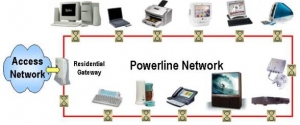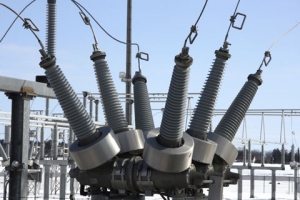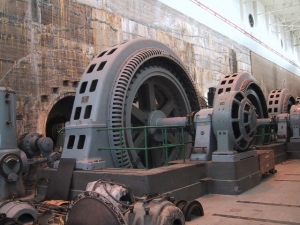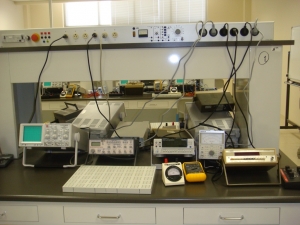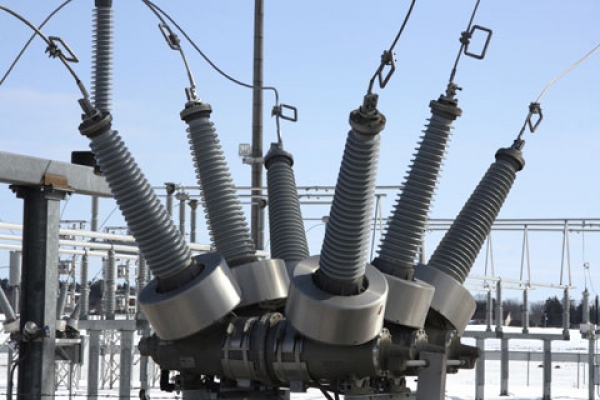
GATE SYLLABUS:
Power Systems:
Basic power generation concepts; transmission line models and performance; cable performance, insulation; corona and radio interference; distribution systems; per-unit quantities; bus impedance and admittance matrices; load flow; voltage control; power factor correction; economic operation; symmetrical components; fault analysis; principles of over-current, differential and distance protection; solid state relays and digital protection; circuit breakers; system stability concepts, swing curves and equal area criterion; HVDC transmission and FACTS concepts.
JNTU SYLLABUS
POWER SYSTEMS-1
UNIT-I Thermal Power Station:
Line diagram of Thermal Power Station (TPS) showing paths of coal, steam, water, air, ash and fluegasses.-Brief description of TPS components: Economizers, Boilers, Super heaters, Turbines,Condensers, Chimney and Cooling towers.
UNIT-II Gas and Nuclear Power Stations:
Nuclear Power Stations: Nuclear Fission and Chain reaction.- Nuclear fuels.- Principle of operation of Nuclear reactor.-Reactor Components: Moderators, Control rods, Reflectors and Coolants.- Radiation hazards: Shielding and Safety precautions.- Types of Nuclear reactors and brief description of PWR,BWR and FBR. Gas Power Stations: Principle of Operation and Components ( Block Diagram Approach Only)
UNIT-III General Aspects of Distribution Systems and D.C. Distribution Systems:
Classification of Distribution Systems - Comparison of DC vs AC and Under-Ground vs Over - Head Distribution Systems- Requirements and Design features of Distribution Systems-Voltage Drop Calculations (Numerical Problems) in D.C Distributors for the following cases: Radial D.C Distributor fed one end and at the both the ends (equal/unequal Voltages) and Ring Main Distributor.
Unit-IV A.C. Distribution Systems:
Voltage Drop Calculations (Numerical Problems) in A.C. Distributors for the following cases: Power Factors referred to receiving end voltage and with respect to respective load voltages.
Unit-V Substations:
Classification of substations:
Air insulated substations:-Indoor & Outdoor substations: Substations layout showing the location of all the substation equipment. Bus bar arrangements in the Sub-Stations: Simple arrangements like single bus bar, sectionalized single bus bar, main and transfer bus bar system with relevant diagrams.
Gas insulated substations (GIS):-Advantages of Gas insulated substations, different types of gas insulated substations, single line diagram of gas insulated substations, bus bar, construction aspects of GIS, Installation and maintenance of GIS, Comparison of Air insulated substations and Gas insulated substations.
UNIT-VI Power factor and Voltage Control:
Causes of low p.f -Methods of Improving p.f -Phase advancing and generation of reactive KVAR using static Capacitors-Most economical p.f. for constant KW load and constant KVA type loads, Numerical Problems. Dependency of Voltage on Reactive Power flow.- Methods of Voltage Control: Shunt Capacitors, Series Capacitors, Synchronous Capacitors, Tap changing and Booster Transformers
UNIT-VII Economic Aspects of Power Generation:
Load curve, load duration and integrated load duration curves-load, demand, diversity, capacity,utilization and plant use factors- Numerical Problems.
Unit-VIII Tariff Methods:
Costs of Generation and their division into Fixed, Semi-fixed and Running Costs. Desirable Characteristics of a Tariff Method.-Tariff Methods: Flat Rate, Block-Rate, two-part, three –part, and power factor tariff methods and Numerical Problems.
POWER SYSTEMS-II
UNIT-I Transmission Line Parameters:
Types of conductors - calculation of resistance for solid conductors - Calculation of inductance for single phase and three phase, single and double circuit lines, concept of GMR & GMD, symmetrical and asymmetrical conductor configuration with and without transposition, Numerical Problems. Calculation of capacitance for 2 wire and 3 wire systems, effect of ground on capacitance, capacitance calculations for symmetrical and asymmetrical single and three phase, single and double circuit lines, Numerical Problems.
UNIT-II Performance of Short and Medium Length Transmission Lines:
Classification of Transmission Lines - Short, medium and long line and their model representations -Nominal-T, Nominal-Pie and A, B, C, D Constants for symmetrical & Asymmetrical Networks, Numerical Problems. Mathematical Solutions to estimate regulation and efficiency of all types of lines - Numerical Problems.
UNIT-III Performance of Long Transmission Lines:
Long Transmission Line-Rigorous Solution, evaluation of A,B,C,D Constants, Interpretation of the Long Line Equations, Incident, Reflected and Refracted Waves -Surge Impedance and SIL of Long Lines, Wave Length and Velocity of Propagation of Waves - Representation of Long Lines - Equivalent-T and Equivalent Pie network models (numerical problems).
UNIT–IV Power System Transients:
Types of System Transients - Travelling or Propagation of Surges - Attenuation, Distortion, Reflection and Refraction Coefficients - Termination of lines with different types of conditions - Open Circuited Line, Short Circuited Line, T-Junction, Lumped Reactive Junctions (Numerical Problems). Bewley’s Lattice Diagrams (for all the cases mentioned with numerical examples).
UNIT-V Various Factors Governing the Performance of Transmission line:
Skin and Proximity effects - Description and effect on Resistance of Solid Conductors -Ferranti effect - Charging Current -Effect on Regulation of the Transmission Line, ShuntCompensation.Corona - Description of the phenomenon, factors affecting corona, critical voltages and power loss, Radio Interference.
UNIT-VI Overhead Line Insulators:
Types of Insulators, String efficiency and Methods for improvement, Numerical Problems – voltage distribution, calculation of string efficiency, Capacitance grading and Static Shielding.
UNIT-VII Sag and Tension Calculations:
Sag and Tension Calculations with equal and unequal heights of towers, Effect of Wind and Ice on weight of Conductor, Numerical Problems - Stringing chart and sag template and its applications.
UNIT-VIII Underground Cables:
Types of Cables, Construction, Types of Insulating materials, Calculations of Insulation resistance and stress in insulation, Numerical Problems. Capacitance of Single and 3-Core belted cables, Numerical Problems. Grading of Cables - Capacitance grading, Numerical Problems, Description of Inter-sheath grading.

